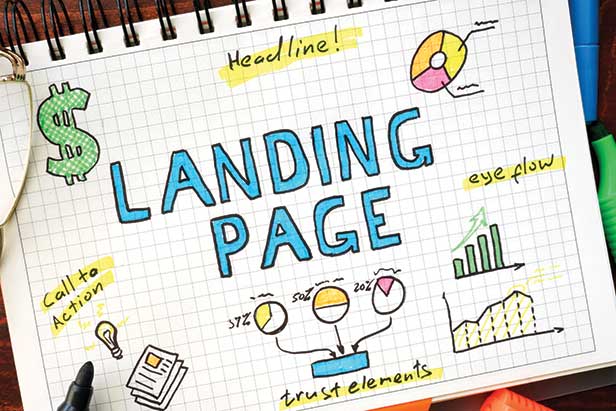March 26, 2019
How to Improve Your Landing Page Conversion Rate
Use these 10 strategies to turn website visitors into buyers.
1. Streamline to the Essential
According to Oli Gardner, a digital marketing expert who co-founded Unbounce, landing pages should ideally have an “attention ratio” of 1:1. Attention ratio is the ratio of the number of things a visitor can do on a given page to the number of things the visitor should do. The more things visitors can potentially do on a page that distract them from the one thing a marketer wants them to do, the more confusing it gets for the prospect and the less likely they are to take the desired action, the reasoning goes. With that in mind, shear each landing page to its essentials – a paring down that many marketing experts say should include removing links, social share buttons and navigation menus. Yuppiechef, a South African company selling premium kitchen tools, doubled the conversion rate on a landing page by removing a navigation bar – an action that helped take the attention ratio from 15:1 to 3:1.

2. Get Creative With Your Offer
In a study of high-conversion landing pages, the online advertising/marketing experts at WordStream found an impressive range of creative and differentiated offers. In its own case, WordStream discovered that offering a free trial of its software – a common carrot, so to speak – wasn’t generating desired conversion. WordStream mixed things up and devised an offer of a free AdWords Grader, which provided prospects with recommendations to improve their Google AdWords strategy. “Prospects loved it and conversions went through the roof,” founder Larry Kim wrote in a blog.
3. Feature Interactive Content
While this may seem to contradict the attention ratio advice, it doesn’t if done right. The interactive content should be interesting – even entertaining – and get people to stay on the page and help move them toward taking a call to action (CTA). Commvault, a data protection and information software management company, has used a landing page featuring a calculator that swiftly helps prospects understand how much they could reduce their data footprint. Page text invites prospects to use the calculator and undertake the CTA – namely, downloading a white paper that provides deeper insights.
4. Make Your CTA Button Stand Out
Feature a CTA button in a color that contrasts with the primary color on your landing page. For instance, if a cool aqua tone permeates your page, make the CTA button a warm yellow, orange or red.
5. Have the CTA Text Convey Value
A blasé “Click here to get started” doesn’t say much. Instead, go with something like “Click Here to Supercharge Your Marketing” to communicate that there’s a reward for engaging with your business.
6. Test & Refine
Identify impediments on your landing page that are discouraging conversion. Test different solutions until you’ve paved the smoothest road possible for the particular prospects you’re courting.
7. Show Pictures of Real People
Page visitors are more apt to convert on landing pages that feature someone who’s actually from your company as opposed to pages with stock art imagery of random models. A study from Marketing Experiments found that visitors to a landing page highlighting a debt relief company’s founder were 35% more likely to fill out a CTA form compared to visitors who landed on an alternative page for the company using stock art of a smiling woman. The more successful page included brief text that identified the man as the founder.
8. Consider Using Illustrations
Artistically crafted illustrations can grab attention and keep prospects on your page. Be sure the visuals emphasize your brand value and aesthetic.
9. Optimize for Mobile
Various studies indicate that more than half of web traffic comes through smartphones and other mobile devices, which is why it’s essential to have your landing page properly formatted for mobile. You simply won’t convert nearly as many visitors if it’s not.
10. Copy Edit Carefully
Not every landing page visitor will spot errors, but folks who do will be disinclined to work with you. Some might even think you’re a scammer, as such errors are often a “tell” in web-based phishing schemes.